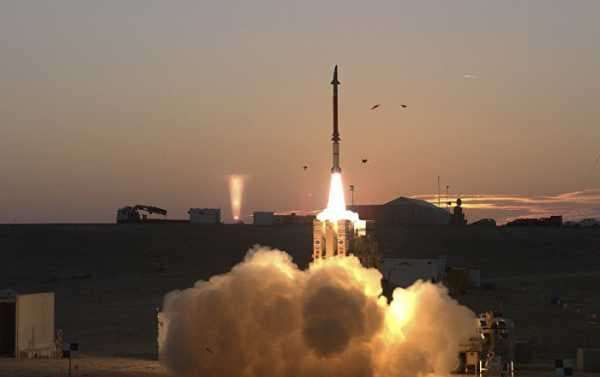
The David’s Sling missile-defense system was designed to intercept aerial threats in close to medium ranges, partially overlapping with the Iron Dome functionality.
The first real combat test for the David’s Sling air defense system was not entirely successful. On July 23 it attempted to intercept two Soviet-era SS-21 missiles, which were allegedly fired in the direction of a militant stronghold in southern Syria.
According to conflicting reports at least one of the interceptor missiles was ordered to self-destruct, although it is unclear at what point. Israeli Haaretz, citing an anonymous Israeli lieutenant colonel, suggested the missile had been destroyed when David Sling’s operator detected that one of the SS-21s wouldn’t hit Israeli territory. The media outlet was unaware of the fate of the second interceptor missile.
Israeli state-radio Kan said that one of the interceptor missiles fell on Syrian territory, meaning that for some reason it failed to intercept an SS-21 missile, while another one self-destructed mid-air above the southern Golan Heights.
David’s Sling missile air defense system was designed to intercept aerial threats in short to medium ranges. The system partially overlaps with the Iron Dome, which is tasked with defending Israel against short-range missiles, and complements the Arrow system that tracks and intercepts ballistic and long-range missiles.
Over recent months Syria’s army has liberated a number of cities in the eastern provinces of Daara and Quneitra in an offensive that began after several cities held by Damascus were shelled by militants. Many militant groups voluntarily abandoned cities in the provinces after negotiations mediated by the Russian Center for Reconciliation. On July 21 the Syrian army began an offensive against the remnants of Daesh* in the southern Golan Heights.
Sourse: sputniknews.com






